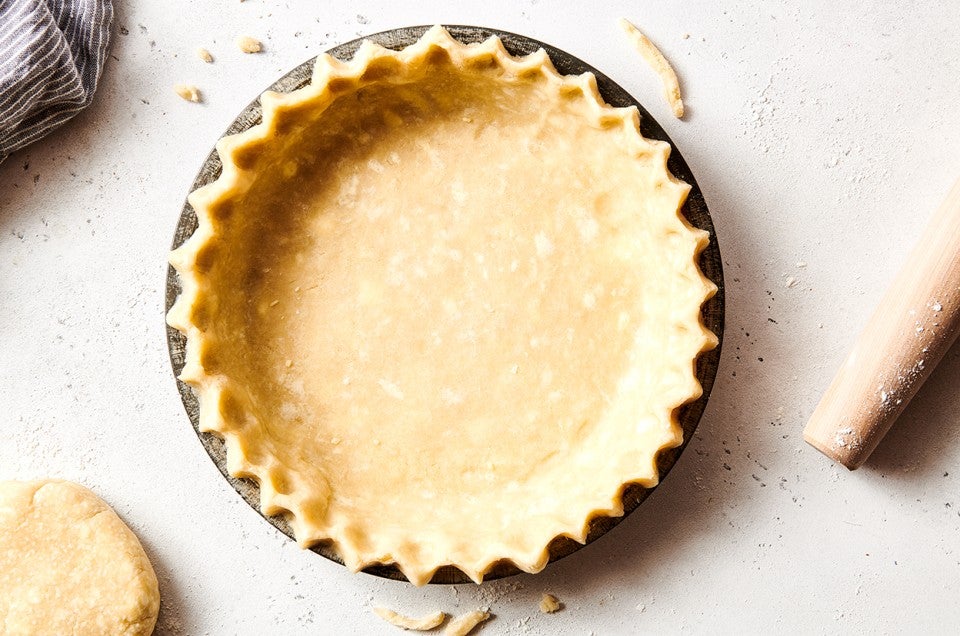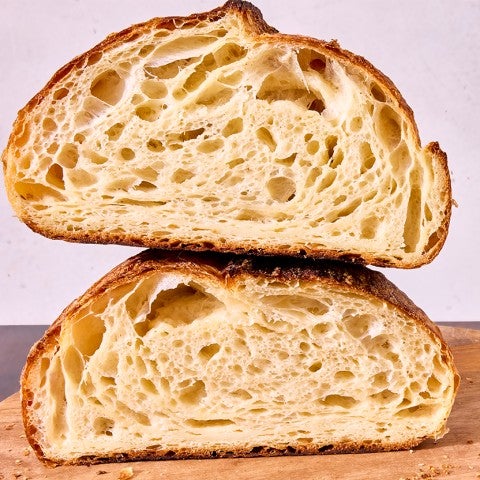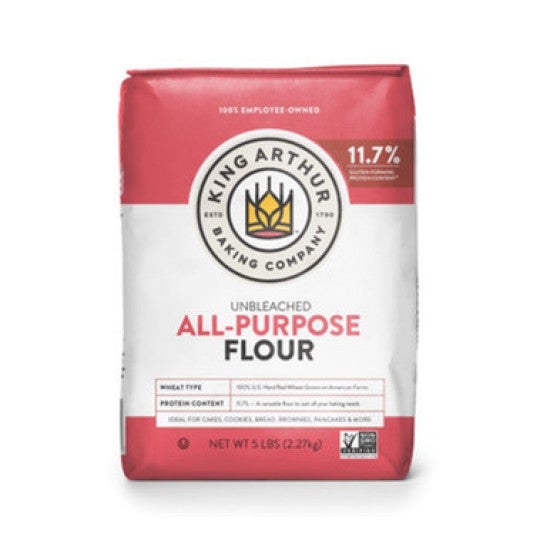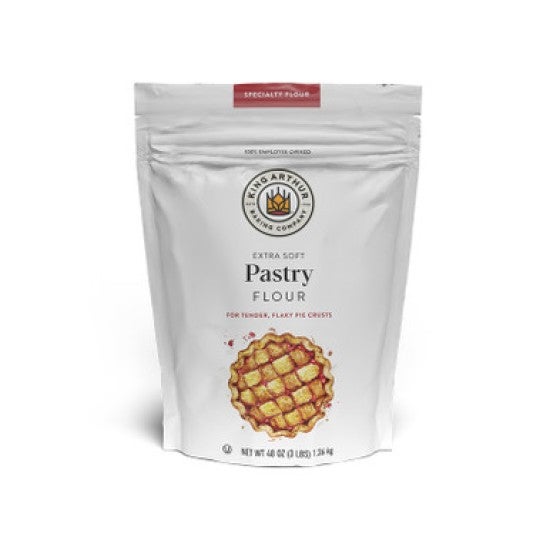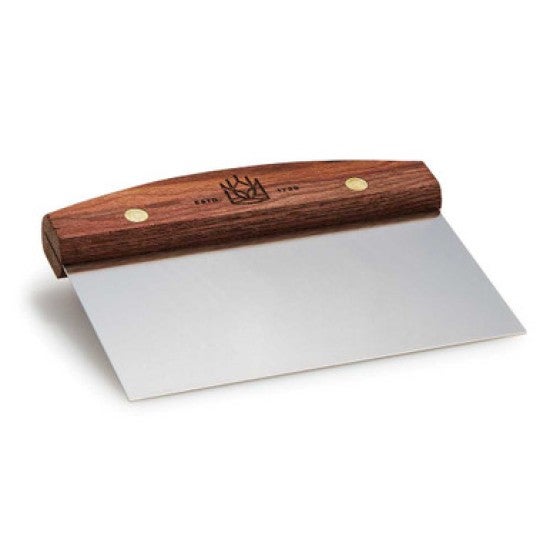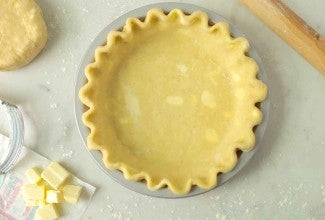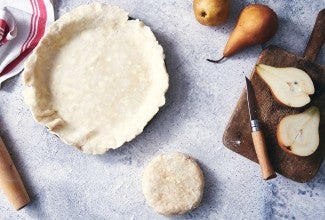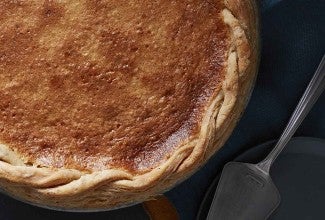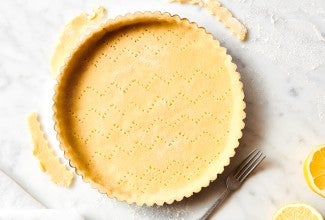-
Place the butter and shortening in the freezer to firm up for 20 to 30 minutes.
-
Meanwhile, place the flour and salt in the bowl of your food processor fitted with the chopping blade. Pulse for 5 seconds to mix the dry ingredients.
-
Add the chilled butter and shortening and pulse for 2 seconds. Repeat three times.
-
Sprinkle the vinegar and 1/4 cup (57g) of water over the dough. Pulse for 1 second. The dough will be crumbly.
-
Transfer the dough to a mixing bowl or lightly floured work surface, pushing it down gently; you want it slightly flattened, not in a round ball. Chunks of butter should still be visible in the shaggy mass, which should be almost moist enough to hold together.
-
Sprinkle 1 tablespoon of water at a time over the dough, gently kneading until it can be squeezed into a ball. Don’t work the dough any more than necessary; handling it gently at this point will help prevent a tough crust.
-
Divide the dough into two pieces and form each into a disk. Wrap each disk in plastic and refrigerate for at least 30 minutes, or up to overnight.
-
When you're ready to bake a pie, remove the dough from the refrigerator and let it rest at room temperature for about 30 minutes, or until it's still cool but soft enough to roll easily, without cracking.
-
For complete details on making pie (including rolling the pastry, transferring it to the pan, adding filling and top crust, and baking), please see our Pie Baking Guide. Store unbaked pie dough, well-wrapped, in the refrigerator for 2 days or in the freezer for up to 2 months.
